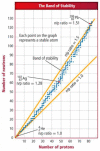The Sub-Molecular and Atomic Theory of Cancer Beginning: The Role of Mitochondria
- PMID: 36359570
- PMCID: PMC9689078
- DOI: 10.3390/diagnostics12112726
The Sub-Molecular and Atomic Theory of Cancer Beginning: The Role of Mitochondria
Abstract
Life as we know it is made of strict interaction of atom, metabolism, and genetics, made around the chemistry of the most common elements of the universe: hydrogen, oxygen, nitrogen, sulfur, phosphorus, and carbon. The interaction of atomic, metabolic, and genetic cycles results in the organization and de-organization of chemical information of what we consider living entities, including cancer cells. In order to approach the problem of the origin of cancer, it is therefore reasonable to start from the assumption that the atomic structure, metabolism, and genetics of cancer cells share a common frame with prokaryotic mitochondria, embedded in conditions favorable for the onset of both. Despite years of research, cancer in its general acceptation remains enigmatic. Despite the increasing efforts to investigate the complexity of tumorigenesis, complementing the research on genetic and biochemical changes, researchers face insurmountable limitations due to the huge presence of variabilities in cancer and metastatic behavior. The atomic level of all biological activities it seems confirmed the electron behavior, especially within the mitochondria. The electron spin may be considered a key factor in basic biological processes defining the structure, reactivity, spectroscopic, and magnetic properties of a molecule. The use of magnetic fields (MF) has allowed a better understanding of the grade of influence on different biological systems, clarifying the multiple effects on electron behavior and consequently on cellular changes. Scientific advances focused on the mechanics of the cytoskeleton and the cellular microenvironment through mechanical properties of the cell nucleus and its connection to the cytoskeleton play a major role in cancer metastasis and progression. Here, we present a hypothesis regarding the changes that take place at the atomic and metabolic levels within the human mitochondria and the modifications that probably drive it in becoming cancer cell. We propose how atomic and metabolic changes in structure and composition could be considered the unintelligible reason of many cancers' invulnerability, as it can modulate nuclear mechanics and promote metastatic processes. Improved insights into this interplay between this sub-molecular organized dynamic structure, nuclear mechanics, and metastatic progression may have powerful implications in cancer diagnostics and therapy disclosing innovation in targets of cancer cell invasion.
Keywords: atoms; cancer; electrons; mitochondria; neutrons; protons.
Conflict of interest statement
The authors declare no conflict of interest.
Figures




Similar articles
-
From Pathogens to Cancer: Are Cancer Cells Evolved Mitochondrial Super Cells?Diagnostics (Basel). 2023 Feb 20;13(4):813. doi: 10.3390/diagnostics13040813. Diagnostics (Basel). 2023. PMID: 36832301 Free PMC article.
-
Nuclear mechanics in cancer.Adv Exp Med Biol. 2014;773:435-70. doi: 10.1007/978-1-4899-8032-8_20. Adv Exp Med Biol. 2014. PMID: 24563360 Free PMC article. Review.
-
Formamide and the origin of life.Phys Life Rev. 2012 Mar;9(1):84-104. doi: 10.1016/j.plrev.2011.12.002. Epub 2011 Dec 13. Phys Life Rev. 2012. PMID: 22196896 Review.
-
The matrix environmental and cell mechanical properties regulate cell migration and contribute to the invasive phenotype of cancer cells.Rep Prog Phys. 2019 Jun;82(6):064602. doi: 10.1088/1361-6633/ab1628. Epub 2019 Apr 4. Rep Prog Phys. 2019. PMID: 30947151 Review.
-
Genetics first or metabolism first? The formamide clue.Chem Soc Rev. 2012 Aug 21;41(16):5526-65. doi: 10.1039/c2cs35066a. Epub 2012 Jun 8. Chem Soc Rev. 2012. PMID: 22684046 Review.
Cited by
-
From Pathogens to Cancer: Are Cancer Cells Evolved Mitochondrial Super Cells?Diagnostics (Basel). 2023 Feb 20;13(4):813. doi: 10.3390/diagnostics13040813. Diagnostics (Basel). 2023. PMID: 36832301 Free PMC article.
References
-
- Santi T. Role of an Atomic-Level-Based Approach for Improving Cancer Therapy. Cancer Management and Therapy. In: Hamza A., Salem N., editors. Cancer Management and Therapy. IntechOpen; London, UK: 2017. - DOI
-
- Helmenstine A.M. How Many Atoms Are There in a Human Cell? ThoughtCo. 2022. [(accessed on 16 September 2022)]. Available online: https://www.thoughtco.com/how-many-atoms-in-human-cell-603882.
LinkOut - more resources
Full Text Sources

